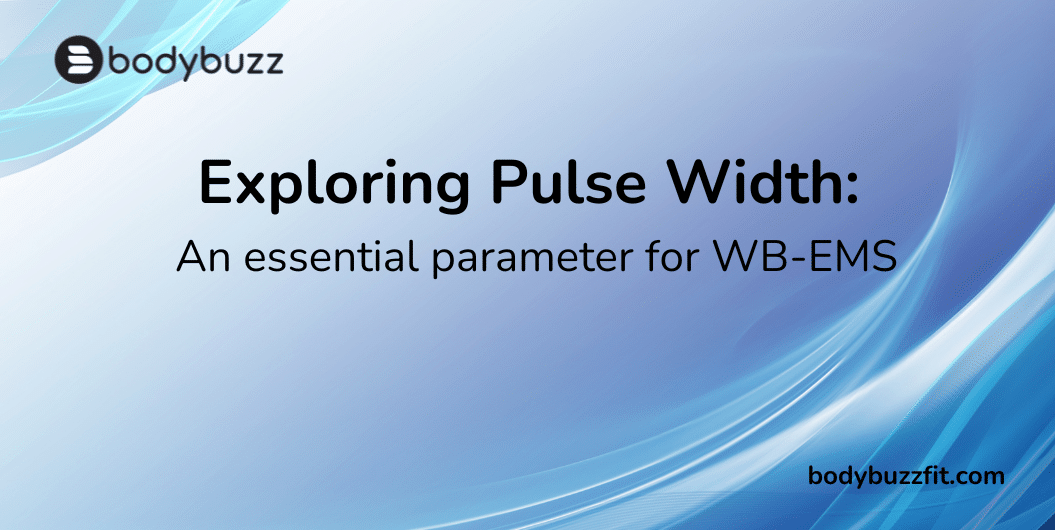Exploring Pulse Width and what it means for WB-EMS
Welcome back to our ongoing exploration of whole-body electrical muscle stimulation! You can read more about the other major parameter, frequency, in our previous blog.
Lets go over some terminology: Chronaxy and Pulse Width
Chronaxy represents the minimum duration of an electrical pulse required to elicit a response from muscle or nerve tissues. It ensures efficient and comfortable muscle activation during WB-EMS.
Pulse width, also known as pulse duration, refers to the duration of the electrical impulse delivered during WB-EMS. It influences the depth of muscle activation, with shorter pulse widths targeting superficial muscles and longer pulse widths reaching deeper muscle layers.
Some manufacturers use the term chronaxy and others use pulse width as one of the main WB-EMS settings along with frequency and duty cycle. While they are related, they represent different aspects of electrical stimulation.
Examples of Pulse Width Settings:
Low (50-200μs) Weak, superficial contraction but will feel less intense and will be less likely to overflow. Good for smaller muscle groups.
Medium (200-350μs) Stronger contraction recruiting more motor fibers but may begin to overflow in smaller muscles. This moderate pulse width setting is suitable for targeting intermediate muscle layers, striking a balance between superficial and deep muscle engagement. We typically use this for warming up.
High (350-500μs) Powerful contraction, will feel deeper and more intense. Good for larger muscle groups. A longer pulse width setting penetrates deep muscle structures, promoting strength, stability, and functional movement patterns. It benefits muscle groups requiring greater activation depth, such as the gluteus maximus or erector spinae.
Standard in Research:
The standard pulse width used in many WB-EMS research studies is 350μs and 85Hz for the workout portion. Newer devices allow different pulse widths per muscle group so we will probably start seeing more precise settings in future research.
Relationship between frequency and pulse width: The goal is full tetanic muscle contraction (read more on what this means here).
Let’s imagine you want to do one pull-up.
You are currently not strong enough to lift your weight.
You have a few options:
- You increase your strength to lift your current weight.
- You decrease your weight enough so your strength has less to lift.
- You increase your strength and decrease your weight to achieve one pull-up faster.
In this analogy, performing one pull-up is achieving full tetanic muscle contraction.
- High frequency – low pulse width will get a tetanic contraction but it won’t be very deep.
- Low frequency – high pulse width will get a tetanic contraction but it won’t be very intense.
- High frequency – high pulse width will get an intense and deep muscle contraction.
These last two blogs were very technical. My goal is to demystify the concepts around WB-EMS to make the education and understanding of this technology more accessible for everyone.
If you want to learn more about EMS, book a free consultation with me here: https://calendly.com/conradfitness/30min. You can also make an appointment to book an intro session at our Newport Beach studio.
Conrad
Managing Director
Bodybuzz

